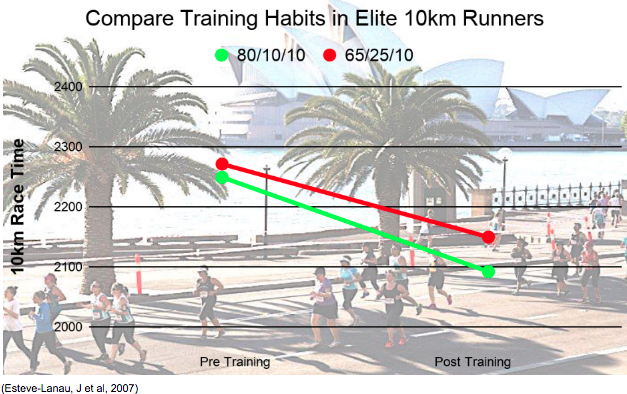Running Training/Routine
By Ed Murray, Podiatrist in Sydney
Understanding how to train is not easy. Many models exist and individual responses to training are just that, individual. But that’s why people smarter than me design studies to investigate trends to help guide coaches, practitioners and keen runners.
Here is a summary of training models that are commonly used by distance runners. Zone 1 - Aerobic, low intensity. Zone 2 - Race pace. Zone 3 - High intensity.
So, which running training model is best?
There is no one-size fits all, but there is a strong push for the ‘Polarized’ model within the elite distance running fraternity.
Here’s a snapshot of what elite marathoners’ training habits look like. This follows the ‘polarised’ model of training, but with a significant bias towards more low intensity training. And to clarify, low intensity is generally <75% max heart rate.
But what is <75% of my max HR?
If you don’t run with one of those swanky watches, a useful tool can be the ‘speak test’. If you can talk quite comfortably, holding a conversation, that usually = low intensity. If you can only hold one sentence but not a full conversation = moderate. If can only get a few words out = high.
Now, check out this study comparing runners that used a 65/25/10 vs 80/10/10 (low/mod/high) intensity regime.
Essentially, a regime dominated by low intensity training resulted in significant time improvements for 10km runners. Pretty cool.
Why is this is cool?
Because it means less hard sessions and more easy ones. Even for 10km runners! Permission to pop the headphones in and just go for a gentle trot - granted. This doesn’t mean no hard sessions, of course, and it doesn’t mean you just run your hard ones easy.
The research indicates:
Run often.
Run far.
~80% of your training at low intensity
One or two high intensity sessions a week (speed work)
Seiler (2010) summarised this idea quite well:
“The studies...suggest that over the long term, (1) successful endurance athletes achieve excellent results when accumulating a high training volume by emphasizing frequent exposure to 60 to 180 min bouts performed at approximately 60 to 75% of VO2 max (ie, LIT) in combination with a modest proportion of training performed at intensities between 85 and 100% of VO2 max (about 20% of training sessions)”
*Book a Comprehensive Running Assessment in Sydney*
Sources (for nerds):
Esteve-Lanau, J et al, 2007, ‘Impact of training intensity distribution on performance in endurance athletes’, Journal of Strength and Conditioning Research, 21 (3), 943-9
Vickers AJ, Vertosick EA 2016, ‘An empirical study of race times in recreational endurance runners’, BMC Sports Sci Med Rehabil, 26;8(1):26
Seiler, S 2010, ‘What is Best Practice for Training Intensity and Duration Distribution in Endurance Athletes?’, International Journal of Sports Physiology and Performance, vol 5, 276-291



